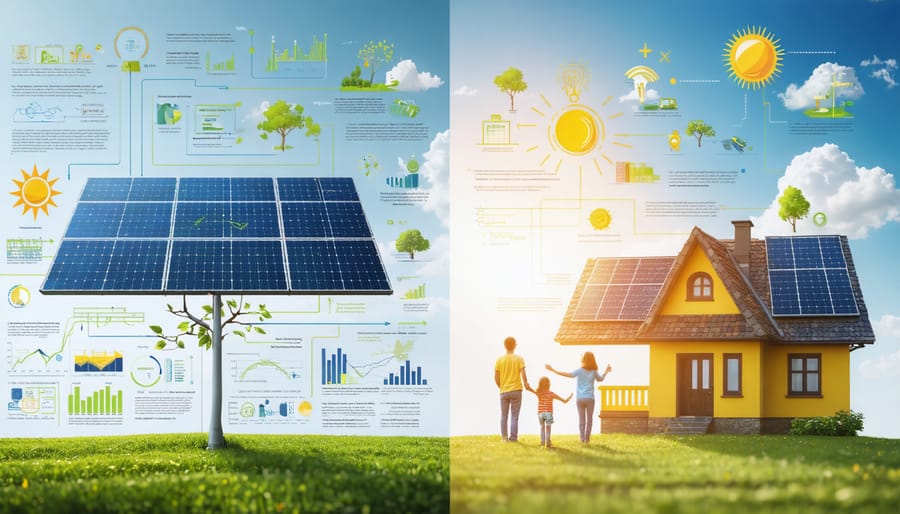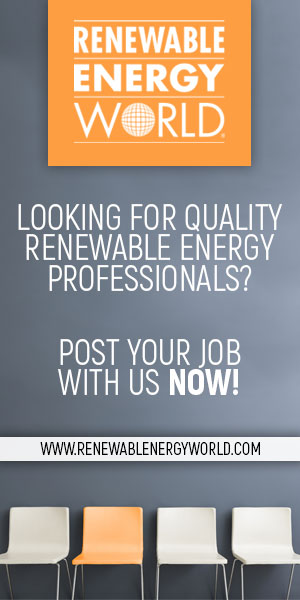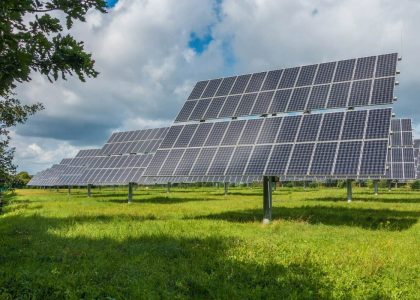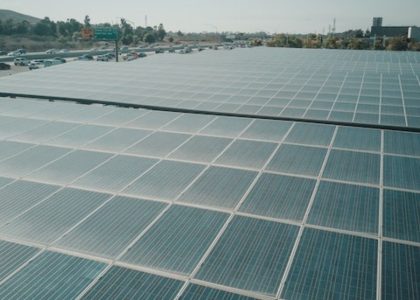Transform renewable energy’s complex technical narrative into compelling social media content by focusing on visual storytelling and data visualization. Marketing professionals can visit website for advanced analytics tools that enhance social media performance in the renewable sector.
Leverage platform-specific features to showcase renewable energy innovations: utilize LinkedIn’s article publishing for detailed industry insights, Instagram’s Reels for behind-the-scenes glimpses of solar installations, and Twitter’s threads for breaking down complex environmental data into digestible insights.
Build credibility through strategic content partnerships with environmental influencers, industry experts, and renewable energy organizations. Share user-generated content from successful renewable energy implementations, combining technical excellence with authentic human stories that resonate across diverse audience segments.
Create a consistent cross-platform narrative that aligns with global sustainability goals while maintaining local relevance. Deploy analytics-driven content calendars that capitalize on environmental awareness days, industry developments, and technological breakthroughs in the renewable energy sector.
Building a Compelling Renewable Energy Brand Voice
Balancing Technical Expertise with Accessibility
Creating engaging social media content about renewable energy requires a delicate balance between technical accuracy and broad accessibility. When discussing recent renewable energy innovations, focus on breaking down complex concepts into digestible pieces without sacrificing scientific integrity.
Start with a clear, relatable hook before diving into technical details. For example, rather than leading with efficiency percentages, begin with the impact on daily life: “Solar panels can now power your home even on cloudy days.” Follow this with precise technical information to maintain credibility.
Use visual aids strategically – infographics, animations, and comparison charts can explain complex concepts more effectively than text alone. When technical terminology is unavoidable, provide brief definitions or contextual explanations in parentheses or as caption text.
Layer your content strategically: lead with broad concepts in the main post, then use comments or thread responses to address more technical questions. This approach keeps the main message accessible while allowing interested followers to dive deeper into the technical aspects.
Remember to maintain a professional tone while using conversational language that resonates with both industry experts and general audiences.
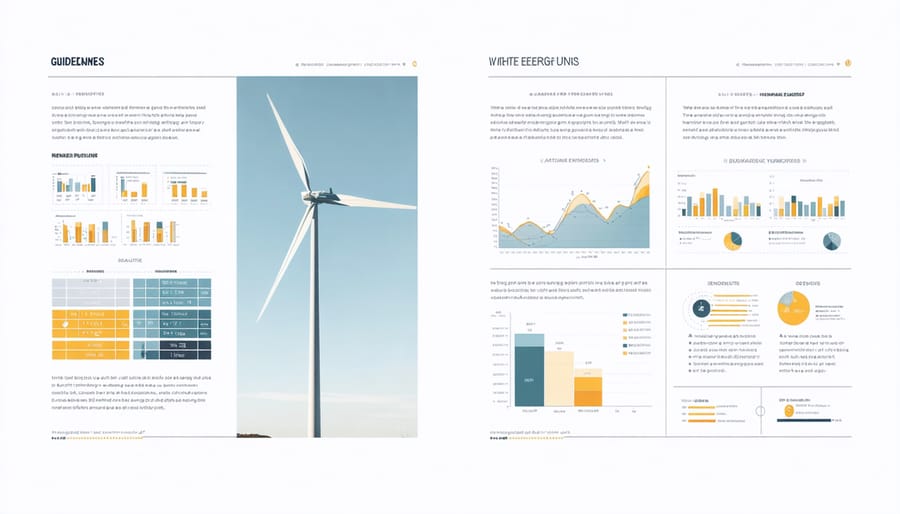
Visual Storytelling for Complex Energy Topics
Visual content is crucial for demystifying complex renewable energy concepts on social media. By transforming technical information into engaging visuals, organizations can effectively communicate their message to diverse audiences. Infographics and data visualizations can simplify complex statistics about energy efficiency and consumption patterns, while animated explainer videos can break down technical advancements in solar technology into digestible segments.
To create compelling visual stories, focus on before-and-after comparisons, progress timelines, and real-world impact demonstrations. Use motion graphics to illustrate energy flow processes, and incorporate interactive elements like polls and sliders to demonstrate cost savings and environmental benefits. Leverage drone footage and time-lapse videos to showcase large-scale renewable projects, helping viewers grasp the scale and impact of these installations.
When designing visual content, maintain consistent branding while using a color palette that reflects sustainability themes. Combine technical accuracy with emotional storytelling by featuring real people and communities benefiting from renewable energy solutions. Remember to optimize visual content for each platform’s specific requirements while ensuring accessibility through clear captions and alt text.
Platform-Specific Strategies That Drive Engagement
LinkedIn: Connecting with Industry Professionals
LinkedIn stands as the premier platform for B2B engagement in the renewable energy sector, offering unparalleled opportunities for establishing thought leadership and fostering professional connections. To maximize your presence, focus on sharing detailed industry insights, technical innovations, and project successes that demonstrate your expertise.
Start by optimizing your company page with comprehensive information about your renewable energy solutions, certifications, and sustainability commitments. Regular posts should highlight industry trends, project milestones, and technological breakthroughs, accompanied by data-driven insights and professional visuals.
Engage with industry groups and participate in relevant discussions to build credibility. Share updates about solar installations, wind farm developments, or energy storage innovations, but ensure content maintains a professional tone while being accessible to potential stakeholders.
LinkedIn Articles serve as an excellent platform for publishing in-depth analyses of renewable energy markets, policy developments, and technological advancements. Use this feature to showcase your team’s expertise and industry knowledge.
For maximum impact, encourage your technical experts and leadership team to share their perspectives on industry developments. Employee advocacy amplifies your reach while adding authenticity to your message. Regular engagement with comments and thoughtful responses to industry discussions helps build meaningful professional relationships.
Remember to leverage LinkedIn’s targeting capabilities for sponsored content, ensuring your messages reach decision-makers in utilities, government, and related industries. Track engagement metrics and adjust your strategy based on what resonates with your professional audience.

Twitter: Real-Time Industry Updates
Twitter’s real-time nature makes it an invaluable platform for renewable energy companies to share breaking news, industry developments, and engage with stakeholders. The platform’s fast-paced environment perfectly suits the rapidly evolving renewable energy sector, where technological breakthroughs and policy changes occur frequently.
To maximize Twitter’s potential, focus on sharing time-sensitive updates about your projects, industry innovations, and market trends. Use relevant hashtags like #RenewableEnergy, #CleanEnergy, and #Sustainability to increase visibility and connect with the right audience. Creating Twitter threads can effectively break down complex topics into digestible segments while maintaining engagement.
Live-tweeting from industry conferences, product launches, and sustainability events helps establish your brand as an active industry participant. Engage with thought leaders, research institutions, and policy makers by retweeting their content and contributing meaningful comments to discussions.
Visual content performs exceptionally well on Twitter. Share infographics about renewable energy statistics, short video clips of project installations, or time-lapse footage of solar and wind farms in action. These elements help break through the noise and capture attention in crowded feeds.
Consider utilizing Twitter Spaces for hosting live discussions about renewable energy topics, facilitating expert panels, or conducting Q&A sessions with industry specialists. This feature can help build community and position your brand as an authority in the renewable energy space.
Monitor relevant keywords and conversations to identify opportunities for meaningful engagement and stay ahead of industry trends. Regular interaction with followers through polls, questions, and responsive customer service helps build a loyal community around your renewable energy brand.
Instagram: Showcasing Innovation Visually
Instagram’s visual-first platform offers unique opportunities for renewable energy companies to showcase their innovations and impact through compelling imagery and storytelling. Success on this platform requires a strategic blend of educational content, behind-the-scenes glimpses, and tangible results that resonate with both industry professionals and environmentally conscious consumers.
High-quality photographs of solar installations, wind farms, and other renewable energy projects form the foundation of an effective Instagram strategy. These images should highlight both the scale and technical sophistication of projects while emphasizing their integration into natural landscapes. Time-lapse videos of construction processes, drone footage of facilities, and before-and-after comparisons can effectively demonstrate project development and impact.
Infographics and carousel posts serve as powerful tools for explaining complex concepts and sharing performance metrics. Use these formats to break down technical information about energy production, carbon offset calculations, and efficiency improvements in digestible, visually appealing ways.
Instagram Stories and Reels offer opportunities to humanize renewable energy initiatives by featuring employee spotlights, installation processes, and day-in-the-life content. These short-form videos can demonstrate the practical applications of renewable technologies while building trust and authenticity with your audience.
Leverage Instagram’s interactive features like polls, quizzes, and questions to engage followers and gather insights about their interests and concerns regarding renewable energy. This engagement not only boosts visibility but also provides valuable feedback for content strategy refinement.
Content Strategies That Convert
Educational Content That Builds Trust
Building trust in the renewable energy sector requires a strategic approach to educational content that demonstrates both expertise and accessibility. Start by breaking down complex renewable energy concepts into digestible pieces, using infographics, short videos, and carousel posts to explain technologies like solar panels, wind turbines, and energy storage systems.
Create content series that address common misconceptions about renewable energy, such as reliability concerns or implementation costs. Share case studies of successful renewable energy projects, highlighting both environmental and economic benefits. This helps followers understand the practical applications and real-world impact of clean energy solutions.
Leverage data visualization to present statistics and research findings about renewable energy adoption, climate impact, and cost savings. Include expert insights from your team members, featuring their credentials and experience to reinforce your authority in the field. Regular “Did You Know?” posts can highlight lesser-known facts about renewable energy innovations and breakthroughs.
Develop educational content that answers frequently asked questions about renewable energy installation, maintenance, and integration with existing power systems. Share updates about industry developments, new technologies, and policy changes, positioning your brand as a go-to source for current information.
Remember to maintain transparency about sources and cite reputable research institutions or government agencies when sharing statistics or studies. This builds credibility and helps establish your social media presence as a trusted educational resource in the renewable energy sector.
Impact Stories That Inspire Action
Compelling success stories are the cornerstone of effective social media engagement in the renewable energy sector. Take the case of Solar Valley Initiative, which transformed its complex technical achievements into bite-sized, shareable content that generated over 2 million impressions across platforms. Their approach of featuring real families and their energy savings resonated deeply with audiences, driving a 300% increase in community solar program sign-ups.
Another striking example comes from WindPower Solutions, whose social media campaign highlighting their innovative wind turbine developments reached beyond traditional industry circles. By sharing before-and-after stories of communities powered by wind energy, complete with engaging visuals and personal testimonials, they achieved remarkable engagement rates and influenced local policy discussions.
The key to these successful narratives lies in their human-centric approach. Instead of focusing solely on technical specifications, these companies showcased tangible impacts: job creation, reduced electricity bills, and improved community resilience. For instance, GreenTech Renewables’ Instagram series featuring their employees’ personal motivations for working in renewable energy generated 5x more engagement than their traditional product posts.
To craft impactful stories, focus on:
– Real people and authentic experiences
– Measurable results and concrete benefits
– Visual storytelling with strong emotional appeal
– Clear calls to action that empower audience participation
– Regular updates showing progress and long-term impact
Measuring and Optimizing Social Media Performance
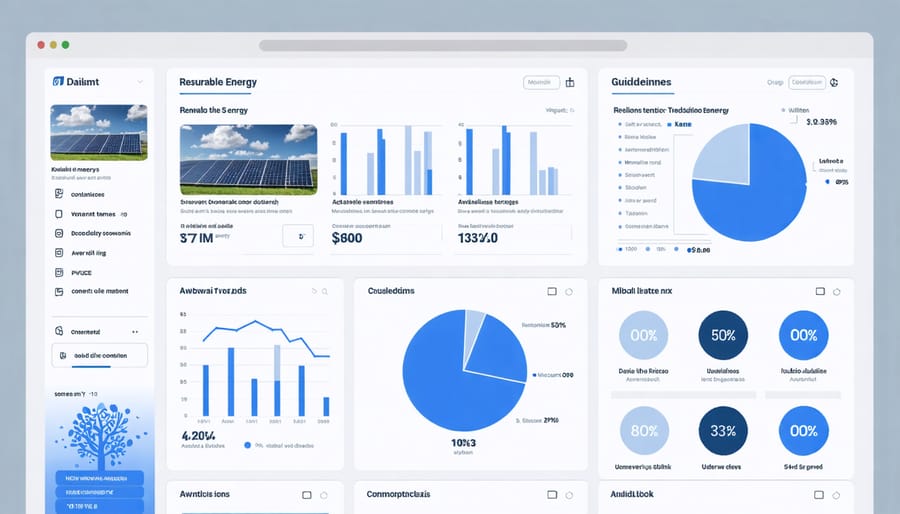
Essential Metrics for Renewable Energy Brands
Tracking the right metrics is crucial for measuring the success of renewable energy social media campaigns. Engagement rates remain a fundamental indicator, but the sector demands specialized attention to certain KPIs that reflect industry-specific goals and stakeholder interests.
Conversion tracking should focus on newsletter signups, whitepaper downloads, and webinar registrations, as these indicate genuine interest in renewable energy solutions. Monitor click-through rates (CTR) specifically for educational content and technical specifications, as these often drive qualified leads in the renewable sector.
Brand sentiment analysis takes on particular importance, especially when measuring public perception of renewable initiatives. Track mentions, comments, and shares while analyzing the context of these interactions to gauge community support and identify potential concerns.
Environmental impact metrics should be incorporated into social reporting. Track engagement with posts highlighting carbon reduction statistics, renewable capacity installations, and sustainability achievements. These metrics help demonstrate the tangible impact of renewable energy projects to stakeholders.
For B2B renewable energy brands, LinkedIn engagement metrics deserve special attention. Monitor connection growth rates within specific industry segments, engagement from decision-makers, and content performance in professional groups focused on renewable energy.
Establish a comprehensive dashboard that combines these metrics with platform-specific analytics. Regular monitoring should include:
– Post reach and impressions by content category
– Audience growth rate in key markets
– Video completion rates for technical demonstrations
– Lead quality scores from social media sources
– Share of voice compared to conventional energy competitors
Remember to align these metrics with broader business objectives and adjust tracking parameters based on campaign goals and market dynamics.
Data-Driven Content Optimization
In today’s data-driven landscape, optimizing social media content for renewable energy requires a sophisticated approach to analytics and measurement. By leveraging comprehensive data analysis, organizations can fine-tune their messaging and maximize engagement with their target audience.
Key metrics such as engagement rates, reach, and conversion tracking provide valuable insights into content performance. For renewable energy companies, tracking topic-specific engagement helps identify which sustainable technologies and innovations resonate most with followers. Through AI-powered sustainability solutions, companies can analyze vast amounts of social media data to identify patterns and optimize content delivery.
Sentiment analysis tools help gauge public perception of renewable energy initiatives, enabling organizations to adjust their messaging accordingly. By monitoring conversations around specific technologies, policy changes, and industry developments, companies can create more relevant and timely content that drives meaningful engagement.
A/B testing different content formats, posting times, and messaging approaches helps refine social media strategies over time. For instance, testing whether technical infographics outperform case study videos, or if morning posts generate more engagement than afternoon content, provides actionable insights for optimization.
Regular analysis of competitor performance and industry benchmarks ensures strategies remain competitive and aligned with sector trends. This data-driven approach enables renewable energy organizations to maintain a dynamic social media presence that effectively communicates their mission while driving measurable results.
In today’s digital landscape, effective social media strategies are crucial for advancing renewable energy initiatives and fostering meaningful engagement with stakeholders. By focusing on authentic storytelling, data-driven content, and platform-specific optimization, organizations can build strong online communities that support clean energy adoption. Remember to consistently measure and adjust your social media approach using analytics, engage actively with your audience, and stay current with emerging trends and platform features. Start by implementing one platform strategy at a time, build your content calendar around key industry events, and gradually expand your social media presence. With dedication and strategic planning, your renewable energy message can reach and inspire audiences worldwide, contributing to the broader clean energy transition.

